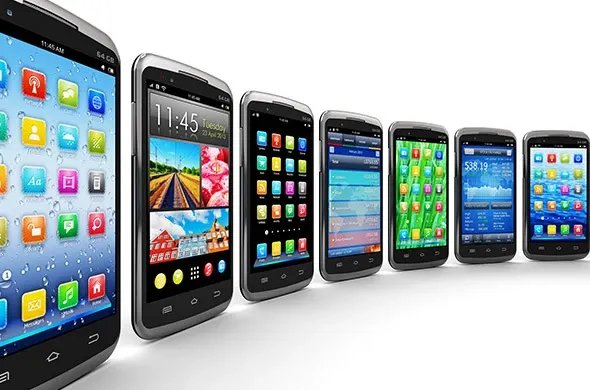LED Video Display Shipments Grew 8.3 Percent in 3Q25
Global LED video display shipments increased by 8.3% year-over-year in the third quarter of 2025, according to Omdia. It was accompanied by a 6.9% increase in revenue.

Smartphones are again the powerhouse in the area of technical consumer goods. In addition to a new record in global demand for smartphones in the first half of 2017, the average selling price (ASP) also increased. These are GfK's findings for the global telecom market on the occasion of IFA 2017 in Berlin.
GfK data shows that, between January and June of 2017, 700 million smartphones were sold worldwide. This represents an increase of five percent year-on-year compared to the same period in 2016, while sales value grew even further, at twelve percent. This is mostly due to a higher ASP paid by consumers, which climbed seven percent to €287 euro on a global level.
The strongest demand was observed in Emerging Asia (up 16 percent), Central and Eastern Europe (up 11 percent), and Latin America (up 11 percent). The growth in these regions more than compensated for the stagnation in the more saturated markets of Western Europe, Developed Asia, and North America.
Today, consumers on average spend a higher amount for a smartphone than they did one year ago. However, a clear improvement in device specifications means those who went for the latest devices still received value for their money. These improvements include larger screens, more storage capacity and processing power, longer battery life time, as well as features such as IP certification for water and shock protection, and superfast charging.
The camera function also enjoyed significant improvement across most models. Consumers benefit from video recordings in 4K quality, a dual camera at the rear side, and increasingly better resolution of the selfie camera on the front. As a consequence, despite the seven percent rise in ASP globally, consumers have better value for money today than in the past.
On the other hand, under the influence of the smartphone boom, global demand for traditional feature phones fell by eight percent to 191 million units in the first half of this year. Adding the two together, total sales of mobile handhelds (smartphones and feature phones) were up by two percent.
The demand for wearables is also showing positive growth. This product group includes smart watches, health and fitness trackers and wrist sport computers such as GPS pulse watches. Connected watches (traditional wrist-watches with Bluetooth functionality), “earables“ (headphones with sensors) and locators for finding children or seniors using GPS, are also smaller segments within wearables.
Demand for wearables in Western Europe increased by 22 percent year-on-year in the period from January to June 2017. In terms of sales value, the market grew by 33 percent. This compares to Asia, which saw an increase of 21 percent in unit sales and 26 percent in sales value.
Besides wearables, VR headsets and VR head-mounted displays are also contributing to the increase in spend within Europe for mobile devices. VR headsets require the addition of a suitable smartphone for use, and are therefore relatively simple and affordable with an average selling price of €33. Head-mounted displays are significantly more expensive with an average selling price of €445.